Carbonate cemented sandstone is the main type of cement formed in deep sandstone reservoirs in Dongying Sag today available in the market at reasonable price for sale. We propose three different carbonate cement phases with different origins and material sources: the early carbonate cements are near-contemporaneous rim-like high-magnesium calcites; During the drying process, the mudstone compacts. The late carbonate cements are iron calcite and iron ash that fill the dissolution pores of the early and middle carbonate cements. The dissolution-reprecipitation of lacustrine carbonate rocks is the reason for the apparent positive change in the δ13CPDB‰ value of the carbonate cement. The middle and late carbonate cements represent the early hydrocarbon input of the Dongying Formation and the end of the Guantao Formation to date. Carbonate cement is an important type of cement in sandstone diagenesis. distribution that can occur in different geochemical environments. Carbonate cements are essential for understanding fluid-rock reaction systems. The material origin and precipitation mechanism of such systems have been investigated using microscopic mineral properties, fluid inclusion temperature measurements, isotopic and other methods. On the other hand, the different oxygen isotope values of different carbonate cements during the precipitation process suggest different fluid-rock interaction systems and strengths resulting from different material sources and precipitation mechanisms. The most important sediments of the initial depositional period are dolomite formed by near-contemporaneous micrite, oolites or detritus, and continuous calcite in the initial phase, which fills the primary pores of the sandstone particles. The temperature of formation of such carbonate cements is usually low; the higher temperature of the middle and late carbonate cement inclusions indicates that they were precipitated at high temperature during diagenesis. In particular, carbonate cement fluid barriers have the same temperature and salinity as oil and gas fluid filling, which can simultaneously record the properties of oil and gas filling and diagenetic fluids. Therefore, the combination of these inclusions and carbonate cements helps reveal oil and gas reserves in sedimentary basins, and has important theoretical and practical implications for oil and gas exploration. for the mentioned notes carbonate cemented sandstone is the main type of cement. 
Carbonate cemented sandstone price
The price for carbonate cemented sandstone ranges from$30 to $70 per square meter for sandstone paving. the carbonate cements of sandstone are mainly calcite, dolomite, iron pyroxene and siderite, and magnesite and rhodochrosite are less common. The distribution patterns, mineralogy, and elemental/isotopic compositions of carbonate cements vary greatly in time and space. The main factors controlling these parameters during near-surface early diagenesis are sedimentation (eg, deposition rate, pore water composition, hydrogeology, climate, latitude, and sea level changes), organic matter content, and surface texture and litter composition. host sediments. Important controlling factors during burial (mesodiagenesis) are temperature, residence time, chemistry and surface water flow rates/patterns, and distribution patterns of early carbonate cements. Due to mass balance constraints, buried carbonates are thought to form as a result of dissolution-reprecipitation (i.e. redistribution) of early carbonate cements and detrital carbonates. However, cements can also be obtained internally from the dissolution of carbonate bioclasts, volcanic material and anorthite, or externally from associated carbonates, evaporites and mudstones. During uplift and erosion, carbonate cements undergo terminal changes and dissolution. Traces of pre-, meso- and ancient conditions are clearly reflected in the mineralogy and geochemistry of carbonate cements. However, carbonates of early origin, especially calcite and dolomite, can undergo recrystallization and isotopic characterization, fluid inclusion temperature measurements and elemental composition recovery.  The carbonate cements of sandstone are mainly calcite, dolomite, iron pyroxene and siderite, and magnesite and rhodochrosite are less common. The distribution patterns, mineralogy, and elemental/isotopic compositions of carbonate cements vary greatly in time and space. The main factors controlling these parameters during near-surface early diagenesis are sedimentation (eg, deposition rate, pore water composition, hydrogeology, climate, latitude, and sea level changes), organic matter content, and surface texture and litter composition. host sediments. Important controlling factors during burial (mesodiagenesis) are temperature, residence time, chemistry and surface water flow rates/patterns, and distribution patterns of early carbonate cements. Due to mass balance constraints, buried carbonates are thought to form as a result of dissolution-reprecipitation (i.e. redistribution) of early carbonate cements and detrital carbonates. However, cements can also be obtained internally from the dissolution of carbonate bioclasts, volcanic material and anorthite, or externally from associated carbonates, evaporites and mudstones. During uplift and erosion, carbonate cements undergo terminal changes and dissolution. Traces of pre-, meso- and ancient conditions are clearly reflected in the mineralogy and geochemistry of carbonate cements. However, carbonates of early origin, especially calcite and dolomite, can undergo recrystallization and isotopic characterization, fluid inclusion temperature measurements and elemental composition recovery.
The carbonate cements of sandstone are mainly calcite, dolomite, iron pyroxene and siderite, and magnesite and rhodochrosite are less common. The distribution patterns, mineralogy, and elemental/isotopic compositions of carbonate cements vary greatly in time and space. The main factors controlling these parameters during near-surface early diagenesis are sedimentation (eg, deposition rate, pore water composition, hydrogeology, climate, latitude, and sea level changes), organic matter content, and surface texture and litter composition. host sediments. Important controlling factors during burial (mesodiagenesis) are temperature, residence time, chemistry and surface water flow rates/patterns, and distribution patterns of early carbonate cements. Due to mass balance constraints, buried carbonates are thought to form as a result of dissolution-reprecipitation (i.e. redistribution) of early carbonate cements and detrital carbonates. However, cements can also be obtained internally from the dissolution of carbonate bioclasts, volcanic material and anorthite, or externally from associated carbonates, evaporites and mudstones. During uplift and erosion, carbonate cements undergo terminal changes and dissolution. Traces of pre-, meso- and ancient conditions are clearly reflected in the mineralogy and geochemistry of carbonate cements. However, carbonates of early origin, especially calcite and dolomite, can undergo recrystallization and isotopic characterization, fluid inclusion temperature measurements and elemental composition recovery. 
Carbonate cemented sandstone for sale
Usually a mid-priced option, carbonate cemented sandstone for sale ranges from $1,750 to $4,500. It’s reasonably priced at $30 to $50 per linear foot. Natural stone pavers are typically priced between $10 and $30 per square foot, while sandstone pavers are at the lower end of the range. Slate and granite are more expensive than sandstone because they are made of harder rocks. Sandstone is a sedimentary rock composed primarily of quartz sand, but may also contain large amounts of feldspar and sometimes silt and clay. Sandstone with a quartz content of more than 90% is called quartz sandstone. When the sandstone contains more than 25% feldspar, it is called feldspar or feldspar sandstone. When there is a lot of clay or silt, geologists call the rock argillaceous sandstone. The color of sandstone varies by composition. The argillaceous sandstone is usually grayish-blue in color. Because sandstone is composed of light-colored minerals, it is usually light brown in color. However, other elements create color in sandstone. The most common sandstones have various shades of red due to iron oxide (rust). In some cases, a purple hue caused by manganese. Loosely compacted material can be mined using high pressure hydraulic monitors. Sand flushed from the work surface is collected in the well, usually pumped into dewatering/pressure piles from which the material can drain freely. When the sand is drained, it reports to the factory.  Well-compacted deposits can be mined using conventional drilling and blasting methods. Once the sandstone is blown away, it is “dug out” by the front end loader, put into a truck and transported to the primary crusher. After crushing, the material can be sent to secondary or tertiary crushing plants. The bonding material is then transported to a processing facility, usually via a conveyor system. Sandstone is a rock made from sediments – sedimentary rocks. Sediment grains are clastic or mineral fragments and rock fragments, so sandstone is a clastic sedimentary rock. It consists mainly of medium-sized sand grains; therefore, sandstone is a medium-grained clastic sedimentary rock. More specifically, sand is 1/16-2 mm in size (silt is finer, gravel is coarser). The grains of sand that make up sandstone are properly called frame grains. Sandstone can contain finer and coarser materials and is still called sandstone, but if it contains more than 30% gravel, pebbles, or boulder-sized particles, it is classified as conglomerate or breccia. (These are collectively called rudites). In addition to sediment particles, sandstone contains two different materials: matrix and cement. Matrix is the fine-grained material (silt and clay size) contained along with the sand in the sediment, while cement is the minerals introduced later to bind the sediment to the rock. Sandstone with more matrix is called poor sorting. If the matrix is more than 10% of the stone, it is called a wacke (“crazy”). Well-sorted sandstone (small matrix), containing a small amount of cement, is called sandstone. Another way to look at it is that wacke is dirty and arerite is clean. You may notice that this discussion does not mention any specific minerals, only specific particle sizes. But in fact, minerals are an important part of the sandstone geological story.
Well-compacted deposits can be mined using conventional drilling and blasting methods. Once the sandstone is blown away, it is “dug out” by the front end loader, put into a truck and transported to the primary crusher. After crushing, the material can be sent to secondary or tertiary crushing plants. The bonding material is then transported to a processing facility, usually via a conveyor system. Sandstone is a rock made from sediments – sedimentary rocks. Sediment grains are clastic or mineral fragments and rock fragments, so sandstone is a clastic sedimentary rock. It consists mainly of medium-sized sand grains; therefore, sandstone is a medium-grained clastic sedimentary rock. More specifically, sand is 1/16-2 mm in size (silt is finer, gravel is coarser). The grains of sand that make up sandstone are properly called frame grains. Sandstone can contain finer and coarser materials and is still called sandstone, but if it contains more than 30% gravel, pebbles, or boulder-sized particles, it is classified as conglomerate or breccia. (These are collectively called rudites). In addition to sediment particles, sandstone contains two different materials: matrix and cement. Matrix is the fine-grained material (silt and clay size) contained along with the sand in the sediment, while cement is the minerals introduced later to bind the sediment to the rock. Sandstone with more matrix is called poor sorting. If the matrix is more than 10% of the stone, it is called a wacke (“crazy”). Well-sorted sandstone (small matrix), containing a small amount of cement, is called sandstone. Another way to look at it is that wacke is dirty and arerite is clean. You may notice that this discussion does not mention any specific minerals, only specific particle sizes. But in fact, minerals are an important part of the sandstone geological story. 
Cemented sandstone price for sale
A typical cemented sandstone price for sale costs as much as $100 per ton for most customers. It can also reach $600 per ton. If you want to include sandstone boulders in your landscape plan, they weigh about 150 pounds per cubic foot. Most cemented sandstones contain some kind of mineral material in the pore spaces that bind the grains together and . This is called mineral cement. Sandstone sometimes contains carbonate mineral cements that cause the stone to react with HCl. Carbonate cemented sandstones can have any sedimentary structure seen in other sandstones. There are two types of carbonate cements commonly found in coal fields: (64X CaCO3) calcite cemented sandstone (64X FeCO3) siderite cemented sandstone These two varieties are generally harder than the typical grey sandstone they are similar to. Calcite-cemented sandstones may be blue to gray and may be speckled. They are easily foamed (effervescent) with dilute hydrochloric acid. Siderite cemented sandstones tend to have a pink or reddish tint compared to the grey varieties, and only blistered when the sample was scraped to powder. the chemical composition of sandstone is usually quartz skeleton grains, which are the main minerals in clastic sedimentary rocks. Because of their excellent physical properties such as hardness and chemical stability.  The physical properties of these quartz particles have withstood several recycling events and also allow for some rounding of the particles. Quartz grains develop from plutonic rocks of felsic origin as well as older sandstones that have been recovered. The second most abundant mineral is feldspar grains. Feldspar can be divided into two parts. They are alkali feldspar and plagioclase. Feldspar minerals stand out under a petrographic microscope. Alkali feldspar is a group of minerals in which the chemical composition of the minerals can vary from KAlSi3O8 to NaAlSi3O8, which represents a complete solid solution. The top picture is plane polarized light, the bottom picture is cross polarized light, and the scale box in the left center is 0.25 mm. This type of grain will be the main constituent of the lithic sandstone. Detrital skeleton particles are fragments of ancient source rock that have not yet weathered into individual mineral particles, called detrital fragments or clasts. Detrital fragments can be any fine- or coarse-grained igneous, metamorphic, or sedimentary rock, although the most common detrital fragments found in sedimentary rocks are volcanic rock groups. Auxiliary minerals are a small fraction of sandstone grains. A common auxiliary mineral. Minerals include mica (musscovite and biotite), olivine, pyroxene, and corundum. Many of these accessory grains are denser than the silicate minerals in the rock. These heavy minerals are more resistant to weathering and can be used as an indicator of sandstone maturity through the ZTR index. Common heavy minerals include zircon, tourmaline, rutile (hence ZTR), garnet, magnetite, or other dense, durable minerals derived from source rocks.
The physical properties of these quartz particles have withstood several recycling events and also allow for some rounding of the particles. Quartz grains develop from plutonic rocks of felsic origin as well as older sandstones that have been recovered. The second most abundant mineral is feldspar grains. Feldspar can be divided into two parts. They are alkali feldspar and plagioclase. Feldspar minerals stand out under a petrographic microscope. Alkali feldspar is a group of minerals in which the chemical composition of the minerals can vary from KAlSi3O8 to NaAlSi3O8, which represents a complete solid solution. The top picture is plane polarized light, the bottom picture is cross polarized light, and the scale box in the left center is 0.25 mm. This type of grain will be the main constituent of the lithic sandstone. Detrital skeleton particles are fragments of ancient source rock that have not yet weathered into individual mineral particles, called detrital fragments or clasts. Detrital fragments can be any fine- or coarse-grained igneous, metamorphic, or sedimentary rock, although the most common detrital fragments found in sedimentary rocks are volcanic rock groups. Auxiliary minerals are a small fraction of sandstone grains. A common auxiliary mineral. Minerals include mica (musscovite and biotite), olivine, pyroxene, and corundum. Many of these accessory grains are denser than the silicate minerals in the rock. These heavy minerals are more resistant to weathering and can be used as an indicator of sandstone maturity through the ZTR index. Common heavy minerals include zircon, tourmaline, rutile (hence ZTR), garnet, magnetite, or other dense, durable minerals derived from source rocks.  The matrix appears in the fractured pore spaces between the framework grains. This pore space can be divided into two categories. They are Anit and Freak. Arenites are pure sandstone with little or no matrix. Wacker is a structurally dirty sandstone with a large amount of matrix. The cement binds the silicon metal skeleton particles together. Cement is a secondary deposit formed after sandstone is buried. These cementitious materials can be silicate minerals or non-silicate minerals such as calcite. Silica cement can be composed of quartz or opal minerals. Calcite cement is the most common carbonate cement. Calcite cement is an option for smaller calcite crystals. Other minerals that act as cements are: hematite, limonite, feldspar, anhydrite, gypsum, barite, clay minerals and zeolite minerals. Structural and mineralogical properties are used to classify sandstones, although there is debate as to which properties should be emphasized. The two major categories of sandstone are sandstone and clastic. The boundary between the two is based on the amount of matrix present in the sample. Arenites contain less matrix than wacke. Although the exact limit is debated, generally 5% of the matrix is the accepted value, and some experts set this limit at 15%. Another common classification uses the name arkose for feldspar-rich rocks. These names are further modified by the ingredients in the stone. Detrital sandstone, feldspar detritus, and quartz sandstone are common examples. My company has for decades been the lead in both supply and export of sandstone to the entire countries around the globe and is hence gently honored to invite all dear customers and traders to browse our wide variety of products through the link provided above the page and experience the best purchase ever in your life.
The matrix appears in the fractured pore spaces between the framework grains. This pore space can be divided into two categories. They are Anit and Freak. Arenites are pure sandstone with little or no matrix. Wacker is a structurally dirty sandstone with a large amount of matrix. The cement binds the silicon metal skeleton particles together. Cement is a secondary deposit formed after sandstone is buried. These cementitious materials can be silicate minerals or non-silicate minerals such as calcite. Silica cement can be composed of quartz or opal minerals. Calcite cement is the most common carbonate cement. Calcite cement is an option for smaller calcite crystals. Other minerals that act as cements are: hematite, limonite, feldspar, anhydrite, gypsum, barite, clay minerals and zeolite minerals. Structural and mineralogical properties are used to classify sandstones, although there is debate as to which properties should be emphasized. The two major categories of sandstone are sandstone and clastic. The boundary between the two is based on the amount of matrix present in the sample. Arenites contain less matrix than wacke. Although the exact limit is debated, generally 5% of the matrix is the accepted value, and some experts set this limit at 15%. Another common classification uses the name arkose for feldspar-rich rocks. These names are further modified by the ingredients in the stone. Detrital sandstone, feldspar detritus, and quartz sandstone are common examples. My company has for decades been the lead in both supply and export of sandstone to the entire countries around the globe and is hence gently honored to invite all dear customers and traders to browse our wide variety of products through the link provided above the page and experience the best purchase ever in your life.

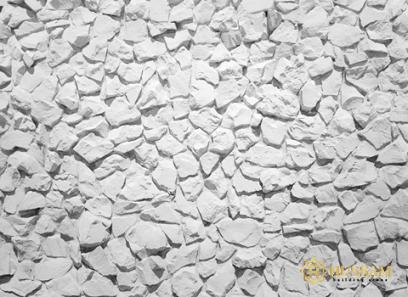

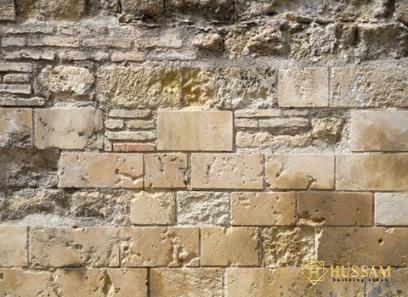
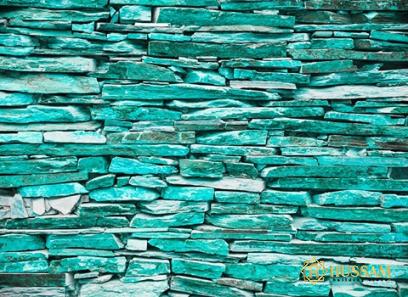

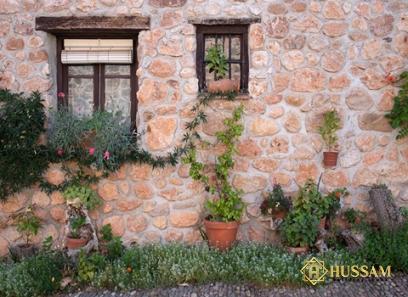
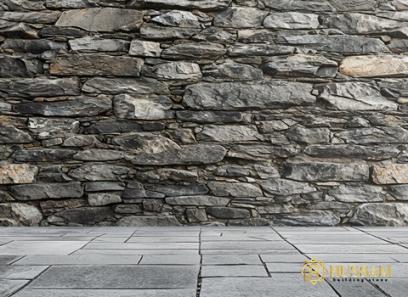
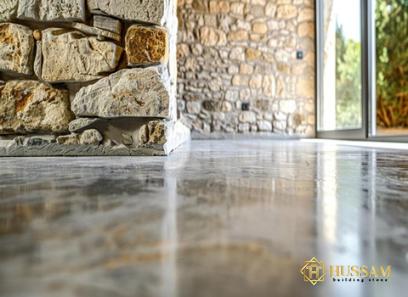
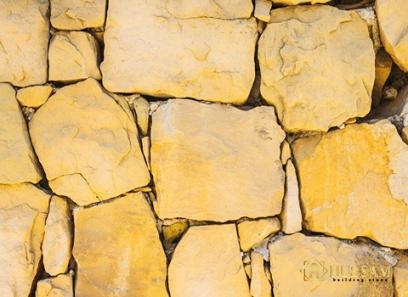
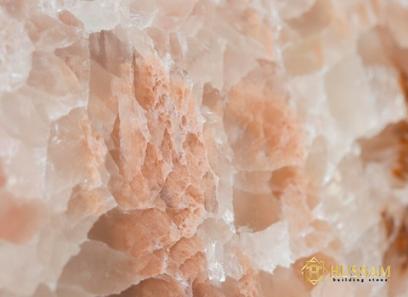
Your comment submitted.